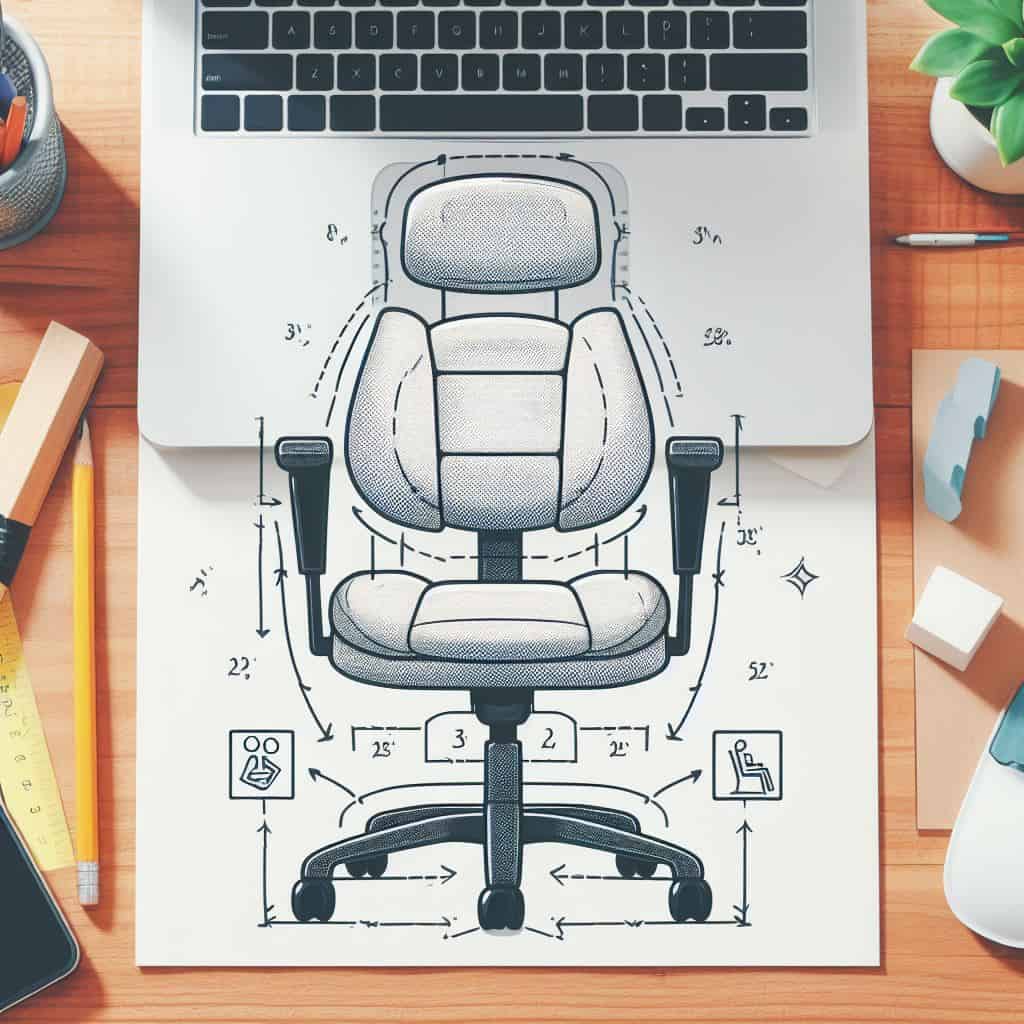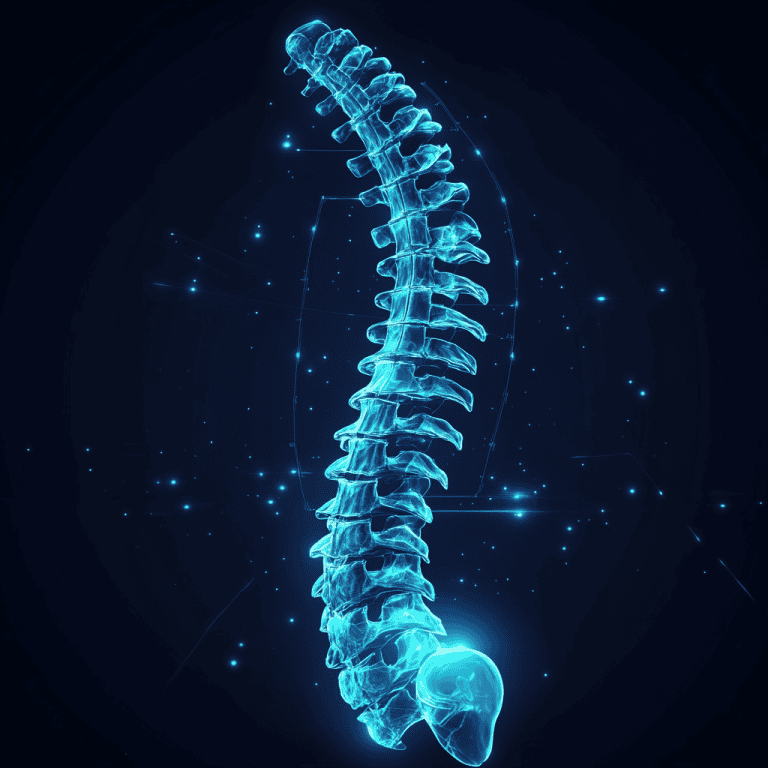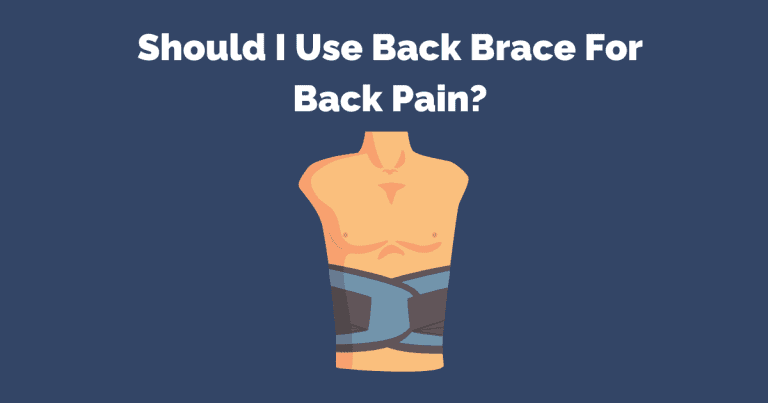Boost Your Productivity with the Right Ergonomic Chair 2024- Here’s How to Choose Office Chairs for Work or Your Next Gaming Session!
Table of Contents
From Yang et al 20161, Low Back Pain Prevalence and Related Workplace, the prevalence of low back pain for all workers in this study were 25.7%. To put in perspective, that is a staggering 1 out of 4 workers suffer from back pain just from work. Especially increase in risk of low back pain for male and female who works over 40 hours a week in office. Now, we sit more than ever before, and in my clinic, clients often ask me how to choose office chairs to avoid back pain, and this prompts me to make a guide to help you find your perfect ergonomic office chair.
If you would like more personal tips from me, then you should sign up for my newsletter/email list. Often, I will share what my clients are asking me during my clinical practice and my answers to them as well.
An ergonomic office chair is designed specifically to provide proper body support while sitting for extended periods. Choosing the right ergonomic chair will help improve your spine health and work productivity.
When you sit for hours without proper ergonomic support, it puts strain on your neck, mid back and particularly lower back. This often leads to soft tissue injuries, including neck muscle strain, lumbar muscle strain, tightness in shoulders and hips, poor leg circulation, and carpal tunnel syndrome in the wrists. An ergonomic chair aims to alleviate these problems by contouring to the natural curves of the spine and providing adjustable lumbar, head, and arm support.
Discomfort from a poorly designed chair is distracting and tiring. But a comfortable, supportive chair allows you to concentrate fully on your work without pain or distractions from adjusting your position. This boosts your efficiency and overall work quality.
So investing in a high-quality ergonomic chair suited to your needs is worth the upfront cost. Your health and performance at work will benefit tremendously from the proper support. This guide will cover how to choose office chairs for your body type, workspace, and preferences.

Which Ergonomic Chair is the Best?
This questions is very difficult to answer and I get asked by this question by my back pain patients who has to sit in front of computer for long durations for their work. The most important thing that I say to them is to invest in an office chair that has different adjustability such as:
- Seat Height
- Seat Width and Depth
- Backrest
- Armrests
- Headrest
- Materials
I encourage you to read until the end, and I will reveal the features I am looking for in an office chair for my office work!
Choosing the Correct Seat Height for Office Chairs
When sitting in an ergonomic chair, your knees should be level or slightly lower than your hips. This allows your feet flat on the floor while keeping your thighs parallel to the ground.
The ideal seat height for you depends on your height and leg length. A good starting point is to have your knees equal to or up to 1 inch lower than your hips when your feet flat on the floor. Your chair should allow you to adjust the height so you can achieve this kneeling alignment while sit upright.
Chairs with pneumatic seat height adjustment make it easy to find the right height for you. Look for an adjustment range suitable for your height – generally 15 to 21 inches off the ground. Taller people need a chair with greater adjustability.
Sit straight with your back against the chair backrest when setting the seat height. Adjust it up or down until your thighs are parallel to the floor and your feet rest comfortably on the ground without too much pressure on the backs of your legs.
Getting the seat height right will help promote good posture and reduce strain on your legs and lower back muscles. It’s important to take the time to find the optimal chair height for your body proportions.

How to Decide Seat Width & Depth for Office Chairs
When sitting in an ergonomic chair, there should be about 2-4 inches of space between the back of your knees and the edge of the seat. This allows your legs to fit comfortably under your workstation without putting excess pressure on the backs of your legs and knees.
To find the ideal seat width for you, sit straight with your back against the chair and measure the distance from the chair’s edge to the back of your knees. The seat width should allow your legs to fit in that space without pressing into the seat edge. If your legs hang off the end of the seat, the chair is too narrow. If there is a large gap between your knees and the seat edge, the chair may be too wide.
The seat depth should also allow you to sit comfortably. There should be 2-4 inches between the back of your knees and the seat edge when your back is resting against the backrest. If the seat depth is too short, the edge will press into the backs of your knees. If it is too long, it can reduce circulation to your lower legs. Aim for a seat depth that positions your body with your weight supported evenly.

What About Backrest for Office Chairs?
The backrest on an ergonomic chair provides critical support for the spine, especially the lumbar region. When seated, the natural curve of the lower spine tends to flatten out, which can lead to back pain and stiffness over time. A good ergonomic chair will be engineered to use back support contour in the lower back region to maintain the spine’s natural S-shape and avoid overloading the spine.
It would be beneficial to look for an adjustable backrest for back support to provide customized support for different body types. An adjustable backrest can help fill in the natural curve in the lumbar spine. A good rule of thumb for the lumbar support portion is to try to find just enough padding to fill in the curvature space, as excessive lumbar support contour can cause overextension in the lower back and cause the incorrect contact position for shoulder blades, affecting upper back support.
In addition to lumbar support, the backrest as a whole should be adjustable. You want the ability to recline the backrest and lock it in place at different angles. This enables you to shift positions and maintain a comfortable upright posture. Just avoid reclining too far, as that strains the neck. If the chair is in a deep reclined position, it can also put tremendous stress on the chair’s integrity and cause task chairs to suffer early wear and tear.
The backrest material also matters for comfort. Mesh and breathable fabrics offer the best ergonomic support and keep your back from overheating when sitting for a long duration. Cushioned padding often feels great initially but compresses over time. For optimal back health, prioritize an ergonomic design with lumbar support over plush padding.

How to Choose Armrests for Office Chairs
When choosing your best chair, pay close attention to the armrests. You’ll rest your elbows and forearms on the armrests frequently, so you want them to be supportive and comfortable.
Look for armrests that are adjustable in height and width with a locking mechanism. Armrest height should allow your shoulders to relax while your forearms rest lightly on the pad. You don’t want the armrests to cause your shoulders to hunch up as it can cause neck tension build up. Adjustable armrest height allows you to position them perfectly for your body.
Armrest width should align with the width of your elbows. If the armrest pads are too narrow, they can pinch your forearms and cut off circulation, potentially causing numbness in the fingers. Pads that are too wide force you to wing your elbows outward. Adjustable armrest width gives you flexibility to find the right fit.
Ideally, the armrest pads should be padded but firm. Thick, squishy padding might seem comfortable at first, but it provides less support over time. Opt for sturdier foam cushions or gel pad.
In my best office chair guide, I went over Gabrylly Ergonomic Mesh Office Chairs that offer the ability to flip the armrest upwards to 45 degrees to organize the office environment.
Proper armrest adjustment helps keep your shoulders relaxed and your upper arms at your sides while typing. This avoids hunching that can strain the neck and upper back. Be sure to test armrest adjustability when evaluating ergonomic chairs.

Headrest for Office Chairs
A headrest is optional for most users but can provide extra head and neck support if needed. Headrests are especially beneficial for the following cases:
- For prolonged sitting job. The headrest helps maintain the natural curve of the spine and avoids straining the neck muscles.
- Tall users. Taller people may need the extra headrest support to avoid craning their neck when sitting upright.
- Anyone sitting in a reclined position for prolonged periods. Reclining slightly while working puts more pressure on the neck, so a headrest helps take some of that strain.
- Those with pre-existing neck issues. People with neck injuries or chronic pain can benefit from a headrest to relieve tension.
Headrests are adjustable on most chairs, able to move up and down as well as tilt forward and back. This adaptability allows people of different heights to properly position the headrest at the right spot on their spine.
The headrest padding is also important for comfort. Look for a soft yet supportive material that contours to the natural curve of your head and neck without causing any pressure points. Memory foam or latex foam tends to provide the best blend of softness and support.
Ultimately, a headrest is a nice addition but not essential for everyone. Try a chair with and without one to determine if your neck and head need that extra support during long work days. Those who regularly recline or have neck issues will likely appreciate the benefits of a quality headrest.

Materials for Office Chairs
When choosing a comfortable chair, pay attention to the type of material used, as this impacts comfort and breathability. Mesh or fabric with an open weave is ideal, as it allows air to pass through and prevents heat buildup during long work sessions. In my previous review, Steelcase Gesture, and Herman Millar ergonomic chairs offer mesh and breathable fabric also conforms to your body’s contours better than leather or vinyl.
Look for chairs made with soft, high-quality mesh or fabric that feels good against your skin. The seat cushion should be well-padded but still firm and supportive. Poor quality, thin padding will compress after short-term use, becoming uncomfortable.
Also, consider whether the chair has anti-microbial properties to discourage odour and bacteria growth over time. Some manufacturers apply antimicrobial treatments to mesh and fabric.
It is worth looking into the weight capacity for office chair, plastic base for office chair takes on less body weight compared with steel/aluminum base.
Overall, prioritize breathable, high-quality materials that keep you cool and comfortable throughout the workday. Avoid chairs made entirely of non-breathable materials like leather, plastic or rigid vinyl cushions.

Ergonomic Office Chair: Adjustability
An effective ergonomic desk chair should have adjustable features to accommodate people of different heights and sizes. The key areas of adjustability to look for include:
- Seat height – The chair should allow you to adjust the height of the seat so your thighs are parallel to the floor and your feet are flat on the ground. This takes pressure off your legs and improves posture.
- Backrest tilt – Look for a backrest you can tilt backward and lock into different positions. Tilting opens up the angle between your torso and thighs to take pressure off your lower back.
- Armrest height – For proper shoulder support, armrests should adjust up and down so your arms gently rest on them without hunching your shoulders.
- Lumbar support – Many ergonomic chairs have adjustable lumbar support to match the natural curve of your lower spine. This prevents slouching and back pain.
- Headrest – Some chairs offer vertical adjustment of the headrest. Position it to support your neck in a neutral position as you work.
The more adjustability a chair offers, the easier it will be to find your optimal ergonomic position for your work or playing games. However, don’t pay for features you won’t use. Focus on the adjustments that matter most for your needs and body type. Testing a chair before buying can help determine if its adjustability range works for you.

Ergonomic Office Chair: Budget
When shopping for an ergonomic chair, you’ll find prices can range quite a bit depending on the features and quality. Basic ergonomic chairs can be found for around $100, while more high-end office chair with lots of customization and adjustment options can cost over $1000.
Budget Guide for Office Chairs:
- $100 – $300: Entry-level ergonomic chair. These provide basic adjustments like seat height, tilt tension, and lumbar support. The materials and build quality tend to be decent but not outstanding.
- $300 – $600: Mid-range ergonomic chair. These offer more adjustments, better materials, and more durable construction. Features like adjustable armrests, contoured cushions, and polished casters start appearing in this range.
- $600 – $1000: High-end ergonomic chair. Top quality materials, precise adjustments, and premium features like adjustable headrests and polished aluminum bases can be found here. These are built to last many years of heavy use.
- $1000+: Luxury ergonomic chairs. The most customizable chairs have innovations like automatically adjusting tilt tension, posture tracking sensors, and ultra-breathable mesh fabrics. More for executives and workaholics than the average user.
When setting your budget, consider how intensively you’ll use the chair and for how many hours per day you sit. Investing more upfront in a quality office ergonomic chair tends to pay off in the long run through improved comfort and avoiding health issues. But a mid-range chair around $300-600 offers great value for most users.

Different Types of Ergonomic Chairs Compared to Traditional Office Chairs
Kneeling Ergonomic Office Chair
The Kneeling Ergonomic Office Chair is designed to promote healthy posture and reduce back strain. It features a unique kneeling position that distributes the user’s weight evenly and encourages a straight spine alignment. This chair offers comfort and support, making it a great choice for those who spend long hours sitting at a desk.
Saddle Ergonomic Office Chair
The Saddle Ergonomic Office Chair offers a unique seated saddle-shaped design that promotes proper posture and reduces back strain. It encourages a natural sitting position with an open hip angle, allowing for better circulation and comfort. This chair is a great option for those seeking improved ergonomics and support while working.
Exercise Ball Ergonomic Office Chair
The Exercise Ball Ergonomic Office Chair is a fitness-inspired seating option designed to improve core strength, posture, and balance. It features a stability ball base that allows for constant micro-movements, engaging the user’s muscles and encouraging active sitting. This chair is a great choice for those looking to incorporate movement into their workday.
Recliner Chair
The Recliner Chair is a comfortable and versatile seating option compared to an office chair. Recliner chair allows users to adjust their position and recline for optimal relaxation. With a range of adjustable features, such as footrests and backrests, this chair offers customizable support and is perfect for lounging, resting, or watching TV.

Additional Accessories for An Office Chair
Comfort Pillow
The Comfort Pillow for office chair is a supportive cushion designed to enhance the comfort and ergonomics of any chair. It provides extra padding and support to ensure proper posture and reduce back and neck strain. This pillow is a great addition for those seeking added comfort during extended periods of sitting.
Foot Rest
The Footrest inaddition to office chair is a versatile accessory designed to provide ergonomic support and increase comfort while sitting. It helps promote proper blood circulation, reduces pressure on the legs and feet, and allows for customizable height and angle adjustments. This footrest is a valuable addition for those seeking optimal sitting posture.
Ergonomic Keyboard
The Ergonomic Keyboard is a specially designed keyboard that promotes proper hand and wrist alignment, reducing the risk of repetitive strain injuries while working long periods in front of office desk. With a split and angled layout, adjustable height, and ergonomic key shapes, this keyboard enhances comfort and productivity during extended typing sessions.
Lumbar Cushion
The Lumbar Cushion is a supportive cushion that offers targeted lumbar support to alleviate lower back pain and improve posture. You can buy lumbar cushions separately to attach your task chair. With its ergonomic design and adjustable straps, it can be easily attached to any office chair, providing maximum comfort and promoting a healthier sitting position.

What Does Dr. Leo Look for In An Ergonomic Office Chair?
Personally, I am not looking for the most expensive ergonomic office chair; if the task chair has the main features that I look then I will purchase it, and these features are:
Office Chair Adjustable Seat Height
For seat height, the main purpose is to allow you to adjust your eye level to the top of computer screen to reduce tension for your neck joints, and it also allows you to adjust the relative elbow height to the table as your elbows should rest gently on the table.
Backrest Height
For backrest height, I look for an office chair that is tall enough just like a car seat, as it allows to gently rest my upper back and neck to the backrest while maintaining my lumbar spine for optimal weight distribution.
Armrest Swivel
The Armrest swivel feature, I would say, is more personal as I work long periods in front of the computer, I like to change my position of my arms, and the armrest swivel ability I can modify to accommodate my preference.
Lumbar support.
The last feature that I look for is a mild lumbar contour to help align my spine when working in front of the computer for a long time sitting. The lumbar support should not be too bulky and cause lumbar spine hyperextension. This sensation will feel like your tummy region is pushed out, and long periods of hyperextension can cause joint discomfort and mid-back pain.
Final Thought
For this post, I have gone through an extensive list of ergonomic office chair feature, and I strongly encourage you to try out different types of task chairs to find the right ergonomic office chair. As of now, I am using Herman Miller Aeron Chair, and it serves its purpose for my back support and has helped maximize my office productivity. Plus, its a pretty ergonomic office furniture! Budget-wise, Herman Miller Aeron office chair can cost 1000+ so not everyone has the budget for it. Choose something within your means and comfort.
If you would like more personal tips from me, then you should sign up for my newsletter/email list. Often, I will share what my clients are asking me during my clinical practice and my answers to them as well.You can also email me and reach out! I hope you will find the right ergonomic office chair soon!
Common F&Q for Office Chair
What are the ergonomic benefits of using an office chair?
Ergonomic office chairs promote proper posture, reduce strain on the body, and provide support to the back, neck, and arms, allowing for improved comfort and productivity.
How do I adjust the height of an office chair?
To adjust the height of an office chair, locate the lever or button under the seat. Pulling the lever or pressing the button while lifting or pushing down on the seat will allow you to raise or lower it to your desired height.
What is the weight capacity of an average office chair?
The weight capacity of an average office chair typically ranges from 200 to 300 pounds. However, it is recommended to check the manufacturer’s specifications for the specific chair you are interested in.
How can I clean and maintain my office chair?
To clean an office chair, gently wipe the upholstery with a mild detergent and warm water using a soft cloth. For fabric chairs, spot cleaning may be necessary. Regular maintenance involves periodically tightening screws and lubricating moving parts as needed.
Are mesh office chairs more comfortable than leather ones?
The comfort of an office chair depends on individual preferences. Mesh chairs provide breathability and better circulation, making them ideal for hot climates, while leather chairs offer a luxurious look and may be more suitable for cooler environments.
What features should I consider when buying an ergonomic office chair?
When buying an ergonomic office chair, consider features such as adjustable seat height, lumbar support, armrests, tilt mechanism, and breathable material. These features contribute to better comfort and support for long hours of sitting.
Can an office chair help alleviate lower back pain?
The lifespan of an office chair depends on factors such as usage, quality, and maintenance. On average, a good quality office chair can last between 5 to 10 years before needing replacement.
Can I assemble an office chair myself or do I need professional help?
Most office chairs come with assembly instructions, and they are designed to be easily assembled by the user. However, if you are uncomfortable with assembling it yourself, you can seek professional help.
Are there any warranties available for office chairs?
Many office chairs come with warranties that cover manufacturing defects and other issues. It is advisable to check the specific warranty details provided by the manufacturer or retailer before making a purchase.
- Yang H, Haldeman S, Lu ML, Baker D. Low Back Pain Prevalence and Related Workplace Psychosocial Risk Factors: A Study Using Data From the 2010 National Health Interview Survey. J Manipulative Physiol Ther. 2016 Sep;39(7):459-472. doi: 10.1016/j.jmpt.2016.07.004. Epub 2016 Aug 25. PMID: 27568831; PMCID: PMC5530370.
↩︎







